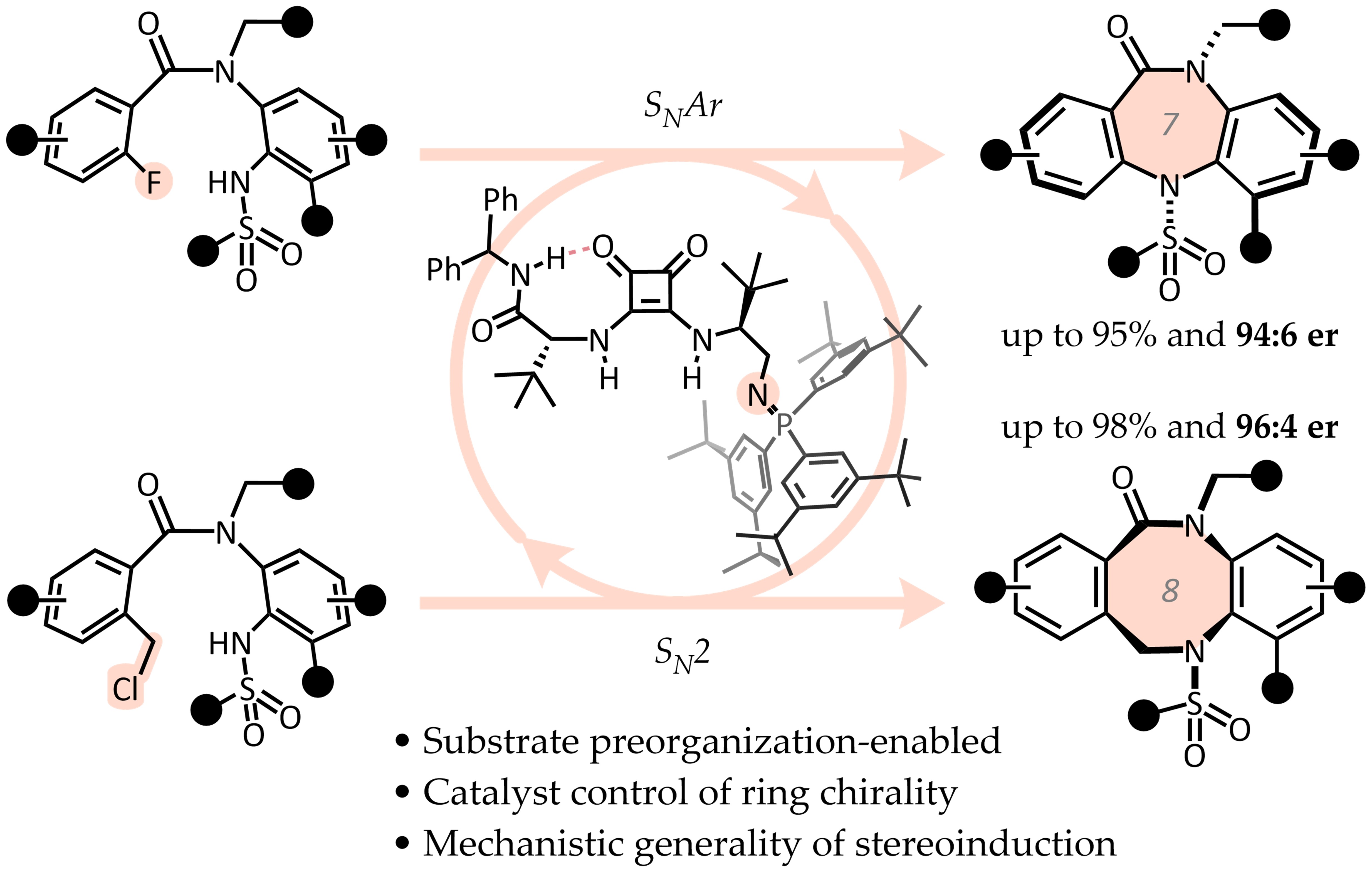Enantiocontrolled Cyclization of Inherently Chiral 7- and 8-Membered Rings
2024-12-20 | 3 minstags: interactive, computational_chemistry, publication
Click and drag to rotate, Ctrl+click/Mouse3 to move, scroll/right-click to zoom.
This blog post contains interactive visualization for the “Enantiocontrolled Cyclization to Form Chiral 7- and 8‑Membered Rings Unified by the Same Catalyst Operating with Different Mechanisms”.1

In the following sections you can find the best conformers for the transition states leading to the major enantiomers of the representative 7- and 8-membered ring substrates. Surprisingly, even though they are formed via the same catalyst, they feature opposite absolute configurations! You can rotate the structures and toggle the visualization of the dipole analysis, which shows how the local components of the catalyst and substrate appear to be oriented in such a way to reduce the magnitude of the overall dipole. This effect, along with hydrogen bonding and dipersion interactions, dictates the relative arrangement of the transition state components and ultimately enables selectivity. The dipole decomposition was performed using atomic partial charges computed with the MBIS method2 through ORCA3 on DFT-optimized structures. Interactive visuals were created with Python and Javascript (3DMol.js4).